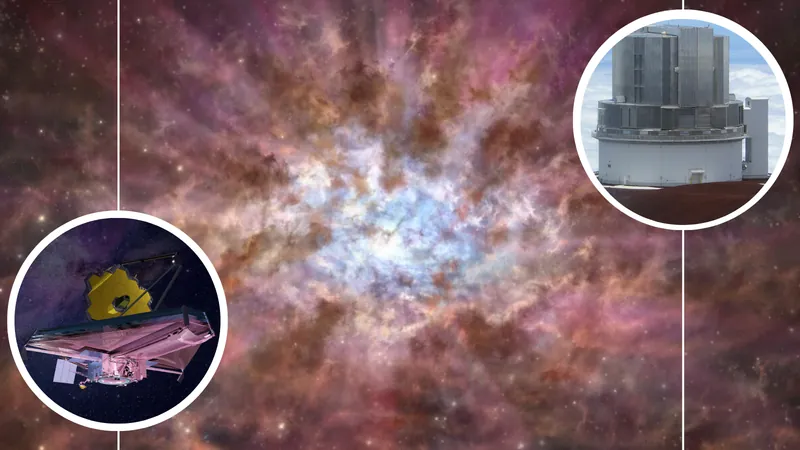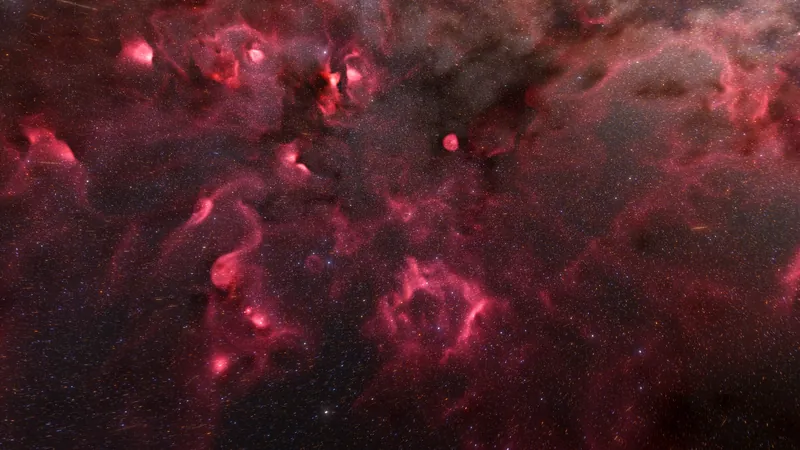
Astronomers Unravel Mysteries of Supermassive Black Holes from the Cosmic Dawn Era!
2025-09-11
Author: Wei Ling
Breakthrough Discovery: Quasars Ignited in the Early Universe!
In a stunning astronomical achievement, researchers utilizing the powerful duo of the Subaru Telescope and the James Webb Space Telescope (JWST) have uncovered seven dazzling quasars powered by supermassive black holes, shrouded in thick dust, dating back to when the universe was under a billion years old.
These supermassive black holes, fiercely consuming surrounding matter and glowing as luminous quasars, have long eluded detection from a period known as the "Cosmic Dawn." This era, unfolding roughly 50 million to a billion years after the Big Bang, is crucial for understanding the universe's evolution.
A Game-Changing Methodology!
Team leader Yoshiki Matsuoka from Ehime University unveiled that this groundbreaking discovery owes much to the strategic collaboration between the two telescopes. "The Subaru Telescope’s expansive and sensitive surveys allowed us to pinpoint rare, luminous galaxies, while JWST captured the elusive infrared signatures of these hidden quasars," Matsuoka explained.
This innovative approach significantly enhances our capability to detect celestial treasures that would otherwise remain hidden.
The Cosmic Role of Quasars!
Supermassive black holes, some billions of times heavier than our sun, are believed to reside at the heart of galaxies. While many of these black holes, like the one in our Milky Way—Sagittarius A*—are relatively dormant, others are voraciously devouring surrounding material, creating swirling accretion disks.
This process generates immense energy, transforming these regions into blinding quasars visible across the cosmos.
Unveiling the Hidden!
Despite the brightness of quasars, cosmic dust has made it challenging to observe them directly. The recent discoveries reflect not just isolated occurrences but suggest that quasars might be occurring double the previously thought rate at Cosmic Dawn.
Through an innovative survey at the Subaru Telescope, researchers flagged luminous galaxies that didn't exhibit the usual ultraviolet markers of quasars. By employing JWST’s infrared capabilities, they sliced through dust to unveil the hidden energy signatures.
Staggering Findings!
Upon analyzing the spectral data, the team reported that these quasars emit energy equivalent to trillions of suns, boasting the power of supermassive black holes that are billions of times heavier than our own star.
Shocking, they found that around 99.9% of the ultraviolet and 70% of the visible light emitted by these quasars is absorbed by surrounding dust, explaining their previous obscurity.
What Lies Ahead?
Encouraged by the findings, the researchers now aim to explore these shrouded quasars further, diving into their mysterious environments compared to their unobscured counterparts. Additionally, they plan to search for even more hidden black holes in the early universe.
This exciting research could reshape our understanding of supermassive black holes and their vital roles in the formation and evolution of galaxies!




 Brasil (PT)
Brasil (PT)
 Canada (EN)
Canada (EN)
 Chile (ES)
Chile (ES)
 Česko (CS)
Česko (CS)
 대한민국 (KO)
대한민국 (KO)
 España (ES)
España (ES)
 France (FR)
France (FR)
 Hong Kong (EN)
Hong Kong (EN)
 Italia (IT)
Italia (IT)
 日本 (JA)
日本 (JA)
 Magyarország (HU)
Magyarország (HU)
 Norge (NO)
Norge (NO)
 Polska (PL)
Polska (PL)
 Schweiz (DE)
Schweiz (DE)
 Singapore (EN)
Singapore (EN)
 Sverige (SV)
Sverige (SV)
 Suomi (FI)
Suomi (FI)
 Türkiye (TR)
Türkiye (TR)
 الإمارات العربية المتحدة (AR)
الإمارات العربية المتحدة (AR)